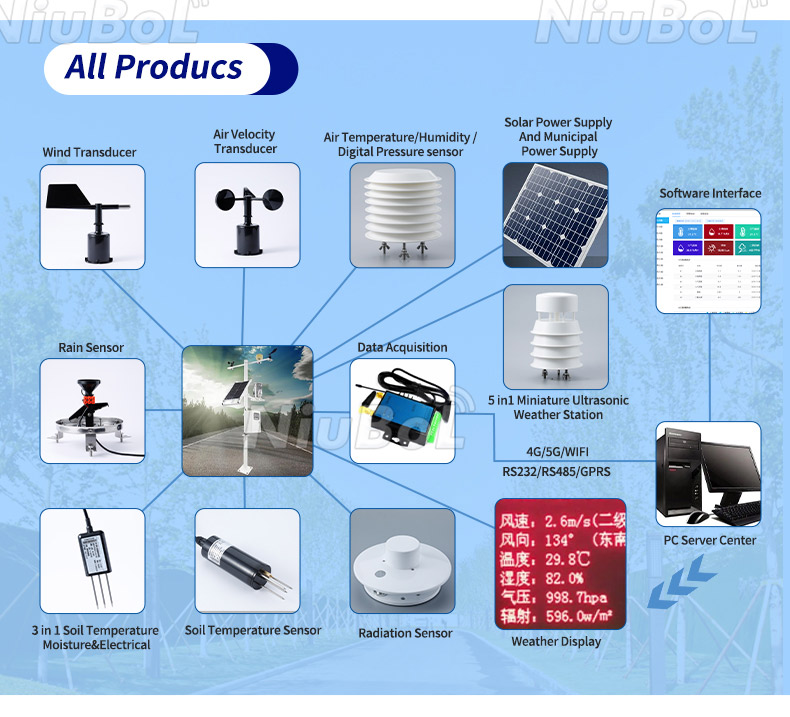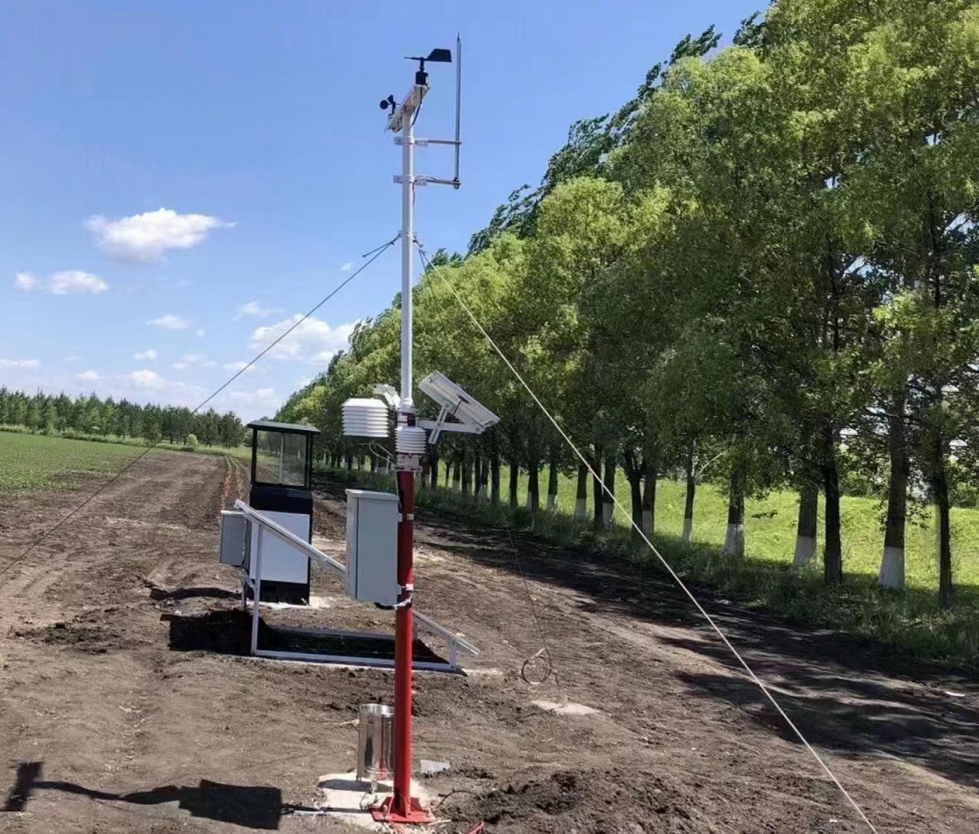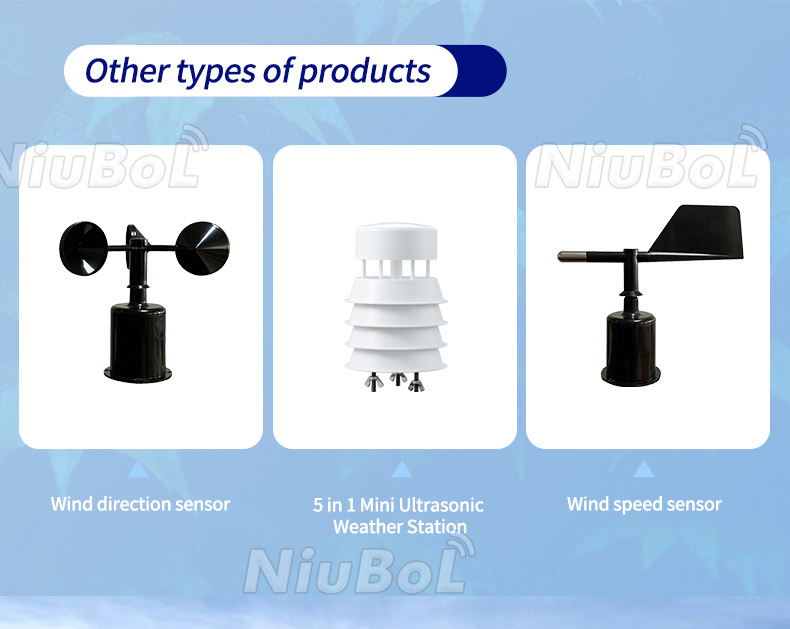

— Blogs —
—Products—
 Consumer hotline +8618073152920
Consumer hotline +8618073152920 WhatsApp:+8615367865107
Address:Room 102, District D, Houhu Industrial Park, Yuelu District, Changsha City, Hunan Province, China
Product knowledge
Time:2022-06-09 21:11:29 Popularity:545
Agriculture is highly sensitive to climatic conditions, and unfavorable weather can significantly impact crop yields. Variations in environmental factors like temperature, humidity, and rainfall can hinder crop growth, resulting in stunted plants and reduced production. Consequently, a lack of optimal conditions for crops can lead to poor harvests and lower financial returns for farmers. This is why crop observation has become an essential practice in modern agricultural production.
Crop observation is a fundamental component of agricultural meteorology. By using small weather stations, farmers can monitor critical environmental factors that directly affect crop growth and development, such as temperature, humidity, wind direction, wind speed, and rainfall. Understanding these factors allows for better decision-making and provides crucial data that aids in agricultural forecasting, intelligence, and climate evaluation. Ultimately, this helps ensure high yields, superior quality produce, and efficient agricultural practices.
Agricultural weather stations are designed to accurately measure and track various agro-meteorological parameters. These include wind direction, wind speed, rainfall, temperature, and humidity. Such stations are especially beneficial during inclement weather conditions, such as thunderstorms or lightning, as they are built to continue functioning even under adverse circumstances.
The data collected by these stations enables farmers to understand how weather conditions influence crop health. Armed with this information, farmers can take proactive steps to mitigate weather-related risks, optimize planting schedules, and make more informed decisions regarding irrigation, fertilization, and pest control. This leads to healthier crops and better yields.

In today’s digital age, agricultural weather stations are an integral part of smart farming practices. Leveraging technologies such as big data, the Internet of Things (IoT), and cloud computing, these stations facilitate the development of smart, connected farming systems. These technologies allow for real-time monitoring and remote control of various environmental factors, making it easier for farmers to adapt quickly to changing conditions.
Furthermore, the integration of digital tools into agriculture—such as precision farming and automated systems—ensures more efficient use of resources, leading to sustainable practices and increased productivity. With the rise of digital agriculture, recycling agriculture, and intelligent agriculture, these weather stations provide essential data that supports the adoption of more advanced, eco-friendly, and data-driven farming methods.

The use of smart weather stations in agriculture is not only beneficial to individual farmers but also has broader implications for the agricultural industry. As these systems become more integrated with digital platforms, they enable the collection and analysis of large-scale weather data, which can be used to predict trends, improve forecasting accuracy, and enhance the overall efficiency of agricultural services and trade.
By providing real-time data on weather conditions, these stations help improve the decision-making processes for agricultural businesses, researchers, and policymakers. Additionally, as more farmers embrace these technologies, there is an increased opportunity for collaboration and knowledge-sharing within the agricultural community, further advancing the field.

In conclusion, agricultural weather stations are invaluable tools for modern farming. They provide farmers with real-time, accurate data about environmental conditions that directly impact crop growth and productivity. With the integration of advanced technologies like IoT and big data, these stations are transforming the agricultural industry by promoting more sustainable, efficient, and intelligent farming practices. As digital agriculture continues to evolve, the role of smart weather stations will be key in supporting the growth of high-yield, high-quality, and resilient agricultural systems.
Related recommendations
Sensors & Weather Stations Catalog
Agriculture Sensors and Weather Stations Catalog-NiuBoL.pdf
Weather Stations Catalog-NiuBoL.pdf
Related products
 Combined air temperature and relative humidity sensor
Combined air temperature and relative humidity sensor Soil Moisture Temperature sensor for irrigation
Soil Moisture Temperature sensor for irrigation Soil pH sensor RS485 soil Testing instrument soil ph meter for agriculture
Soil pH sensor RS485 soil Testing instrument soil ph meter for agriculture Wind Speed sensor Output Modbus/RS485/Analog/0-5V/4-20mA
Wind Speed sensor Output Modbus/RS485/Analog/0-5V/4-20mA Tipping bucket rain gauge for weather monitoring auto rainfall sensor RS485/Outdoor/stainless steel
Tipping bucket rain gauge for weather monitoring auto rainfall sensor RS485/Outdoor/stainless steel Pyranometer Solar Radiation Sensor 4-20mA/RS485
Pyranometer Solar Radiation Sensor 4-20mA/RS485
Screenshot, WhatsApp to identify the QR code
WhatsApp number:+8615367865107
(Click on WhatsApp to copy and add friends)